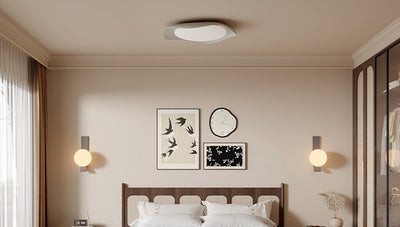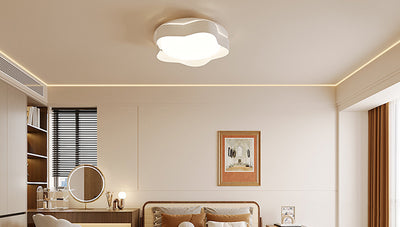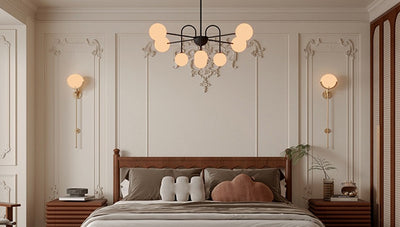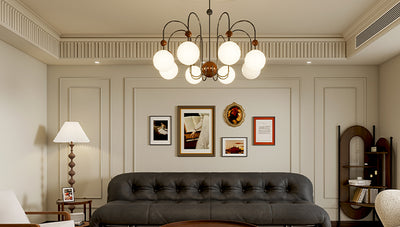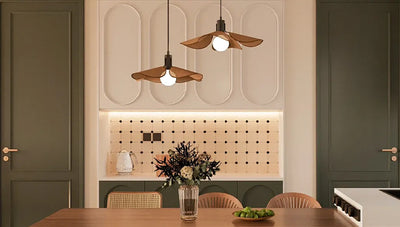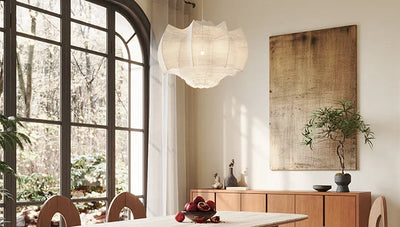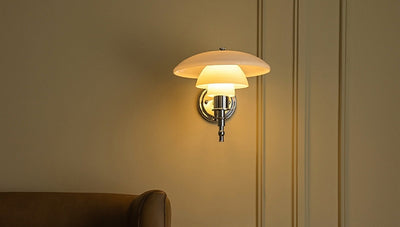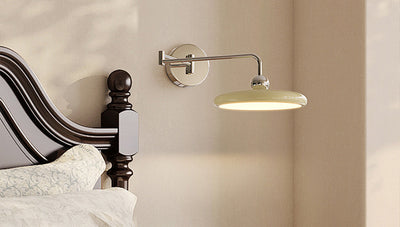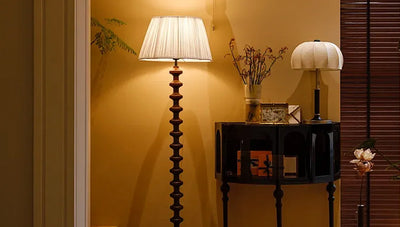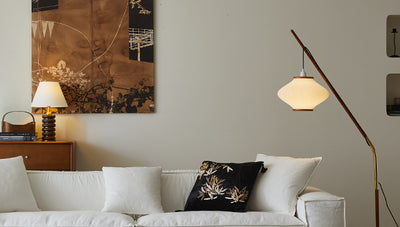Buying a chandelier seems easy—until you realize size can make or break the whole vibe. How to Choose Chandelier Size? That’s the question homeowners and renovators ask right before diving into a sea of measurements, ceiling heights, and design rules. It’s not just about what looks pretty—it's about what fits just right.
Think of it like buying jeans. Too tight, and it's all awkward. Too loose, and you lose the shape. Chandeliers work the same way. A stunning fixture can end up looking like a spotlight at a school play if it’s hung wrong or sized poorly.

"Lighting is the jewelry of the home," says interior designer Kelly Wearstler. And like jewelry, it needs the right scale to shine.
In this guide, you'll get the basics—simple formulas, room-specific tips, and buyer mistakes to dodge. No fluff. Just what you need to pick a chandelier that lights up your space the right way.
Chandelier Size Formula
“When a fixture feels off, it is usually because the math was skipped,” said Alex Kramer, certified lighting designer and member of the American Lighting Association. His voice held a calm authority as he ran his hand across a sleek brass chandelier in his Chicago studio. “Getting the chandelier size right is more than a guess—it is a formula.”
-
Basic Formula for Diameter To calculate the chandelier diameter for any room, use this proven equation: Room Length (ft) + Room Width (ft) = Ideal Fixture Diameter (inches)
- Example: A room that is 12 ft by 16 ft = 28 inches chandelier diameter
-
Ceiling Height Consideration Ceiling height directly impacts fixture drop. Alex often tells clients:
- For standard 8 ft ceilings, keep the chandelier’s height between 20–24 inches
- For taller ceilings, add 2–3 inches of fixture height for every additional foot
-
Room Function Also Matters In dining areas or foyers, the formula adapts:
- Over a table: chandelier width should be ½ to ⅔ the table width
- In a foyer: chandelier height should match 2.5 to 3 inches per foot of ceiling height

🏆 Expert Recognition and Tools According to the National Association of Home Builders, proper lighting enhances spatial harmony by up to 30% in user satisfaction surveys. Several leading lighting brands, including Hinkley and Kichler, provide downloadable chandelier sizing guides to reinforce this calculation.
What Size Chandelier for Dining Table?
Choosing the right chandelier for your dining table isn’t just about looks—it’s about scale, shape, and ceiling height. Let’s break it down.
Ideal Width for Rectangular Tables
Getting the chandelier width right over a rectangular table is all about balance. A good rule of thumb? The fixture's diameter should be ½ to ⅔ the table’s width. This keeps things looking proportionate without overwhelming the space.
- For an 84" x 42" table, aim for a chandelier between 21"–28" wide
- Always allow at least 6" of clearance on each table side
- Keep the lamp shade and lamp base aligned with the table size to maintain clean visual lines
Maintaining scale creates a smooth flow that complements the room's overall design.

Height Rules for Low Ceilings
Low ceilings call for smart sizing. The last thing you want is a chandelier in your face while trying to pass the mashed potatoes.
- Hang the chandelier 30" to 34" above the table surface
- If your ceiling height is less than 8 feet, opt for compact pendant lights or flush mount options
- Choose lamps with a low profile or shallower lamp shades
Keeping proper clearance helps preserve that sense of visual space and makes the room feel taller than it is.
Visual Balance with Table Shape
Visual balance is key when matching a chandelier with the shape of your table. It’s all about symmetry vs. asymmetry, and using your table shape as the anchor.
- For a round table, go with a round or clustered lamp shade
- Rectangular tables pair well with linear or bar-style fixtures
- An oval table? Try a chandelier with a softened rectangular form—it echoes the curve without clashing
Living Room Chandelier Size
Choosing the right chandelier size for your living room is all about scale and style. Here's how to make it look just right.
Matching Fixture Size to Room Scale
The golden rule? Match the fixture size to your room scale—not too big, not too small. Measure the room’s length and width in feet, add them together, and convert the sum to inches. That number is your ideal chandelier diameter.
Example: Room is 12' x 16' → 12 + 16 = 28 → Fixture diameter ≈ 28 inches.
💡 Pro tip: If you’ve got high ceilings, go bigger. Add 2-3 inches for every extra foot of ceiling height. Balance matters—same as you would with a floor lamp or wall sconce in your lighting design.
Chandelier Style for Open Layouts
If your home’s got that breezy open layout, your chandelier style needs to pull its weight. Don't just slap a crystal chandelier over your kitchen island and hope for the best—it has to vibe with the dining room, living room, and even the foyer if it’s all connected.
- Rustic layout? Try a wood-and-metal chandelier.
- Sleek kitchen-dining combo? Go with a modern chandelier—thin lines, matte black, maybe even a ring light.
- For luxe open plans, a multi-tiered crystal chandelier can be the centerpiece.
As interior designer Lisa Ward says,
"In open layouts, a chandelier should guide the eye, not overwhelm it—think cohesion, not collision."

Foyer Chandelier Guidelines
Make your entrance unforgettable with the right chandelier size and placement for your foyer.
Sizing for Two-Story Foyers
Getting the chandelier size right in a two-story foyer is all about scale and proportion. A fixture that’s too small gets lost, too big overwhelms. Ideally, choose a lamp size with a shade diameter equal to 1/5 to 1/6 the width of your foyer dimensions. Also, the shade height should visually balance the vertical space without blocking views. Keep in mind: it should “float” – not hang too high, not too low.
| Foyer Width (ft) | Suggested Diameter (in) | Ceiling Height (ft) |
|---|---|---|
| 10 | 20 | 18–20 |
| 12 | 24 | 20–22 |
| 15 | 30 | 22+ |

Fixture Height Based on Ceiling
- Measure your ceiling height from the floor to the top.
- Multiply by 2.5 to 3 (in inches) to find ideal fixture height.
- Example: A 20-ft ceiling → 50-60 inch chandelier height. Use a downrod length or chain length to adjust hanging. Ensure at least 7 feet of headroom for walkable clearance. Follow standard lighting design rules and remember—no eye-level glare!
“Design is not just what it looks like—it’s how it works.” – Erin Gates, interior designer
Chandelier Visibility from Entry
People notice foyer chandeliers before anything else. It’s your home's handshake. From the entryway, your chandelier must align with the sightline through upper windows to boost curb appeal and create that “wow” first impression. Choose a statement piece that shines through glass or arches. Tip: high-contrast lamp shade styles increase visual impact.
Light Distribution in Narrow Spaces
In narrow spaces like hallways or small foyers, traditional chandeliers often misfire. Go for focused light distribution with narrow beam angles.
- Downlighting works well for general ambient lighting.
- Mix with wall sconces for layered glow.
- Opt for oval or slim lamp shade shapes to avoid harsh edges. For extra style points, add dimmers for smooth mood control. It’s lighting with vibe.
Table Size vs Chandelier Width
Choosing the right chandelier or lamp size for your table is all about proportion. This cluster breaks down how to match fixtures with both large and compact table surfaces.
Chandelier Size for Round Tables
When placing a chandelier above a round table, size and visual harmony matter more than ever. Go too big, and it overwhelms the space. Too small? It disappears. Here’s how to get it just right:
- Diameter Rule: Add the table’s diameter (in inches) to the room size (in feet). This gives you a good estimate for chandelier diameter.
- Balance Matters: Ensure the fixture aligns with the round table’s center to maintain visual symmetry, especially in smaller dining rooms.
"Design is where science and art break even." – Robin Mathew, lighting consultant
Width Ratio for Small Tables
Small tables need the right-sized lamp, or things can get clunky real quick. Whether it's a nightstand, end table, or compact side piece, the balance of lamp base, shade, and table width is key.
- Proportion First: The lamp shade should be no wider than the table itself. Ideally, it takes up about 1/3 to 1/2 of the tabletop width.
- Height Hack: The total lamp height should be about 1.5× the height of the table.
- Style Tip: Slim, tall bases work great when space is tight, especially on narrow end tables.
| Table Type | Table Width (in) | Recommended Lamp Shade Width (in) |
|---|---|---|
| Nightstand | 18 | 9–12 |
| Side Table | 20 | 10–13 |
| End Table | 24 | 12–16 |
How to Hang a Chandelier Properly?
"You would not believe how many times we see gorgeous chandeliers installed poorly," says Edward Liang, senior lighting consultant at ModernGlow Interiors, whose work has appeared in Architectural Digest. "It is not just about hanging a light; it is about safety, balance, and getting the visual impact just right."
Here is a step-by-step breakdown from industry pros and seasoned installers:
- Secure the ceiling support bracket: The chandelier must be mounted to a junction box designed to carry its weight. Do not use a standard ceiling box for heavy fixtures. UL-listed boxes rated for 50 pounds or more are a must.
- Attach the safety cable: This underrated component acts as your insurance policy. Installers like Kimberly Velasquez, a licensed electrician, recommend always threading a safety cable through the fixture frame and anchoring it to the ceiling joist.
- Connect wires with wire connectors and electrical tape: Match wires by color—black to black (live), white to white (neutral), and green or bare (ground). Secure with UL-certified wire connectors, then wrap with electrical tape for extra protection.
- Install the canopy and chain: Adjust the chain to suit the ceiling height. An 8-foot ceiling usually calls for the chandelier to hang 30 to 34 inches above the surface below. Attach the canopy snugly using screws provided with the chandelier.
- Final check: Confirm the weight is supported evenly, the canopy sits flush, and all wiring is tight.
Consumer note: Chandeliers that come with CSA or ETL certification ensure safer installation and better long-term performance. Look for these marks before purchasing.

Conclusion
Picking the right chandelier size is kinda like finding the perfect pair of jeans—it has to fit just right or it throws the whole vibe off. Too small, and it disappears. Too big, and it overwhelms the room. Stick to the size formula, then tweak based on your space and style.
For dining rooms, living areas, or tall foyers, balance is key. Don’t just look at diameter—consider ceiling height, table shape, and the room’s “personality.”
And if you’re still torn, here's a tip: go a bit bigger. In most rooms, it’s the bold statement that wins.

